One swallow may not make a summer, but it’s quite enough to lift the spirits on a showery day in April.
The rapid twittering of its song may well be the first sign. Swallows chatter away incessantly as they dash around over fields and hedgerows.
It’s a buoyant sound, gurgling and gossipy.
Every few seconds it’s interspersed with an insect-like clicking, and a slower, lower-pitched, two-tone phrase, as if they’re taking a breath.
To my ear this sounds like ‘wurzel’, which may remind us that swallows are more open ‘countryside’ birds than their village-dwelling cousins, the house martins.
It can take a few moments to pick out a swallow against a big sky. The contrast between the pale underside and their dark blue upperparts may be what first catches our eye.
Close enough and we'll see their broadly forked tail and long, needle-like feathers streaming behind them too.
Swallows often sing when they’re perched as well as on the wing. Typically they choose a telegraph wire at the roadside, where they can be very noticeable as individuals or pairs as we pass by.
While ‘swallow’ is generally regarded as good enough as a term of identification in Britain, they are more specifically known as ‘barn swallow’.
In other parts of the world this helps differentiate them from the various other species of swallow, and the martins too, which together form a category of birds known as ‘hirundines’.
Among the hirundines, the barn swallow is the most widespread around the world, Indeed it is perhaps the most widespread of all songbirds, with summering populations spread across the northern hemisphere, many of which undertake long southerly migrations in the autumn.
These populations can look a little different from one another - for example American barn swallows have pinky-orange underparts instead of the white.
Wherever in the world we are, the ‘barn’ in barn swallow is a good clue as to where we might find them nesting.
Barn swallows like a roof over their heads, which makes open-sided buildings a favourite.
It also means a door or window left open in the spring may invite a swallow to visit.
While the house martin almost always defies gravity - by fixing their mud nest direct to the vertical side of a building, and usually outside - swallows often take a little help from a horizontal surface, building on top of a rafter or a ledge or a fixture on the wall.
They too use mud, typically gathered from puddle edges in the nearby area, but it’s a messier build than the martin’s, with straw and grasses poking out.
That mud-gathering, and their habit of skimming the very surface of water as they feed, no doubt contributed to one of the most famous and persistent mistakes about the swallow’s life - the idea that they hibernate for the winter in the banks of ponds.
It was put forward by the Greek philosopher Aristotle some 2,000 years ago, and was still persuasive to many naturalists in Europe as late at the 18th century.
It’s testament to the extraordinary realities of migration that we have sought such explanations for the disappearance, and reappearance, of swallows and other migratory birds in our lives.
Find our more about the ecology of the swallow in the UK on the BTO website, and in the US at All About Birds.
Shriek delayed by hoopoes
Hoopoes are my excuse for the delay to this week’s shriek.
A pair of these birds appeared over the weekend close to where I live, causing me (and quite a few others) to change plans.
It’s unusual to see a hoopoe in the UK, and even more unusual to see two together. The strong southwesterly winds, coinciding with the peak of their migration back from Africa to continental Europe, appear to have delivered a bumper arrival to England.
Famously vicars’ lawns are a favourite, but they can turn up anywhere with grass to poke about on. They sound as good as they look too.
🎧 Podcast of the week: What if we deeply listened to the natural world?
I loved this conversation with the sound recordist Andrew Skeoch, featuring field recordings of the dawn chorus in Australia and reflections on how listening to nature (and to human soundscapes) can unlock our appreciation of what’s possible in the natural world, and for our part in it.
Thanks for reading and listening. This is the 14th instalment in 2024’s cycle of Shriek of the Week. You can catch up with Green Woodpecker, Blackcap, Nuthatch, Starling, Chiffchaff, Collared Dove, Wren, Dunnock, Great Spotted Woodpecker, Robin, Great Tit, Song Thrush and Blackbird (that last one includes an explanation of how this all works in 2024).
For those in a position to do so, taking out a paid subscription to Shriek of the Week supports me to write more and improve what I do each year. It also gets you an invitation to our livestream odyssey Early Bird Club call, and discounts to some in-person events in the UK.
Birdsong Academy now booking:
Half-day birdsong ID workshop in Stanmer Park (Brighton)
Dawn Chorus experience at The Secret Campsite, East Sussex
This Friday (12 April) and Friday 10 May.
Up With The Birds - our ‘crowdsourced dawn chorus’ (free, April & May)
The Birds of Alnmouth, with Tom Cadwallender (free Zoom talk, 23 April 2024)
Media credits:
Audio: Bob Ashington - Dorset, Hampshire & IoW Team
First image: Barn Swallow on bare branch
Second image: A swallow in flight. Engraving, ca. 1690, after F. Barlow. Wellcome Collection.
Third image: Hoopoe feeding among grass by junfangsjs on Pixabay




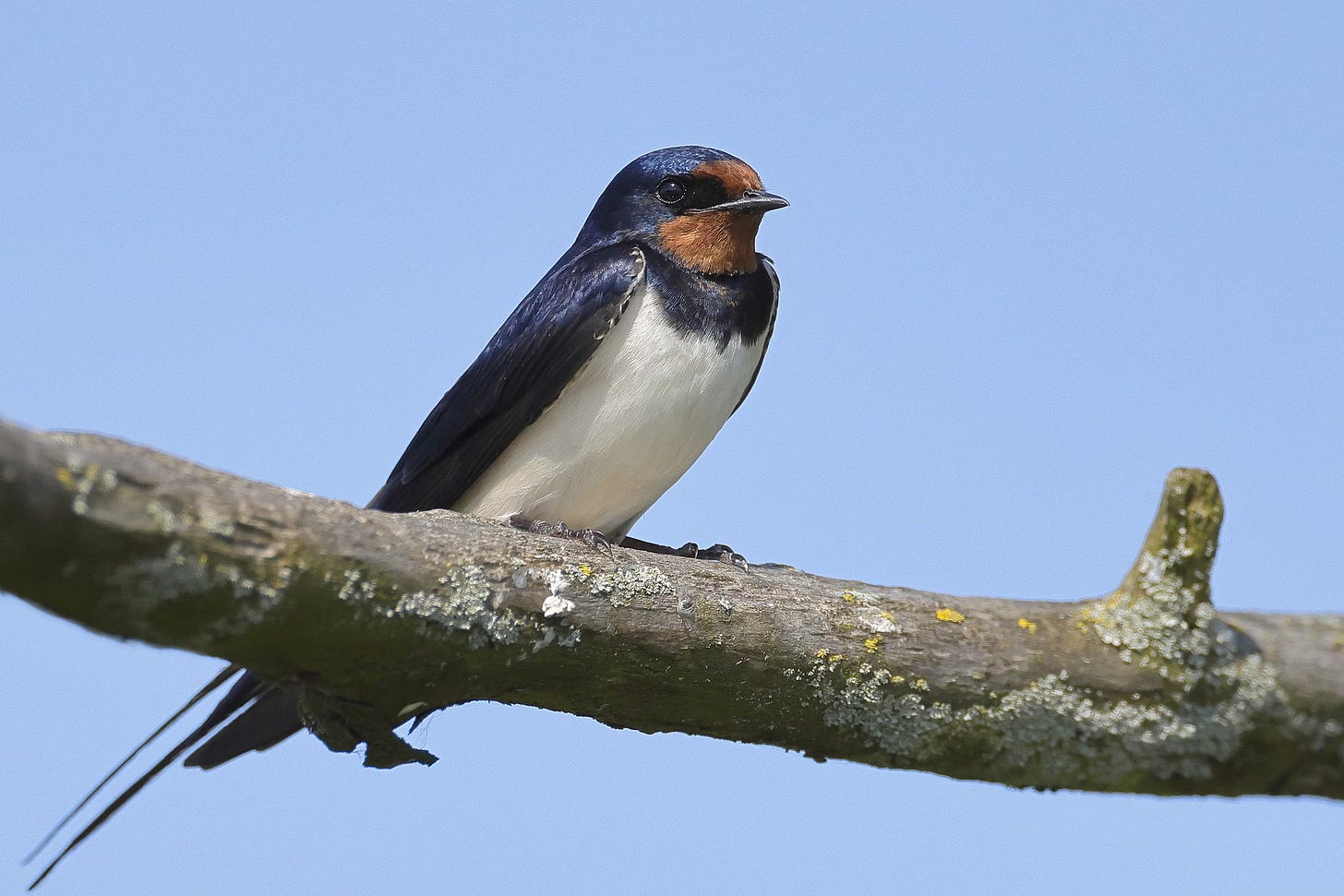
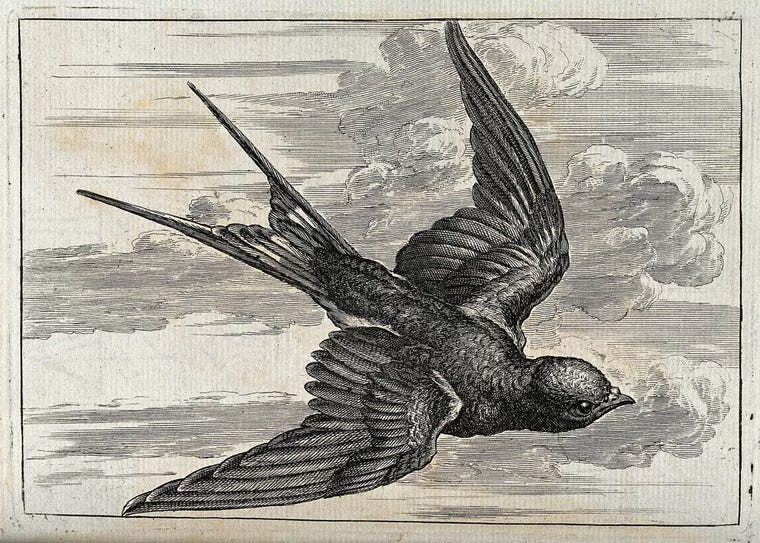
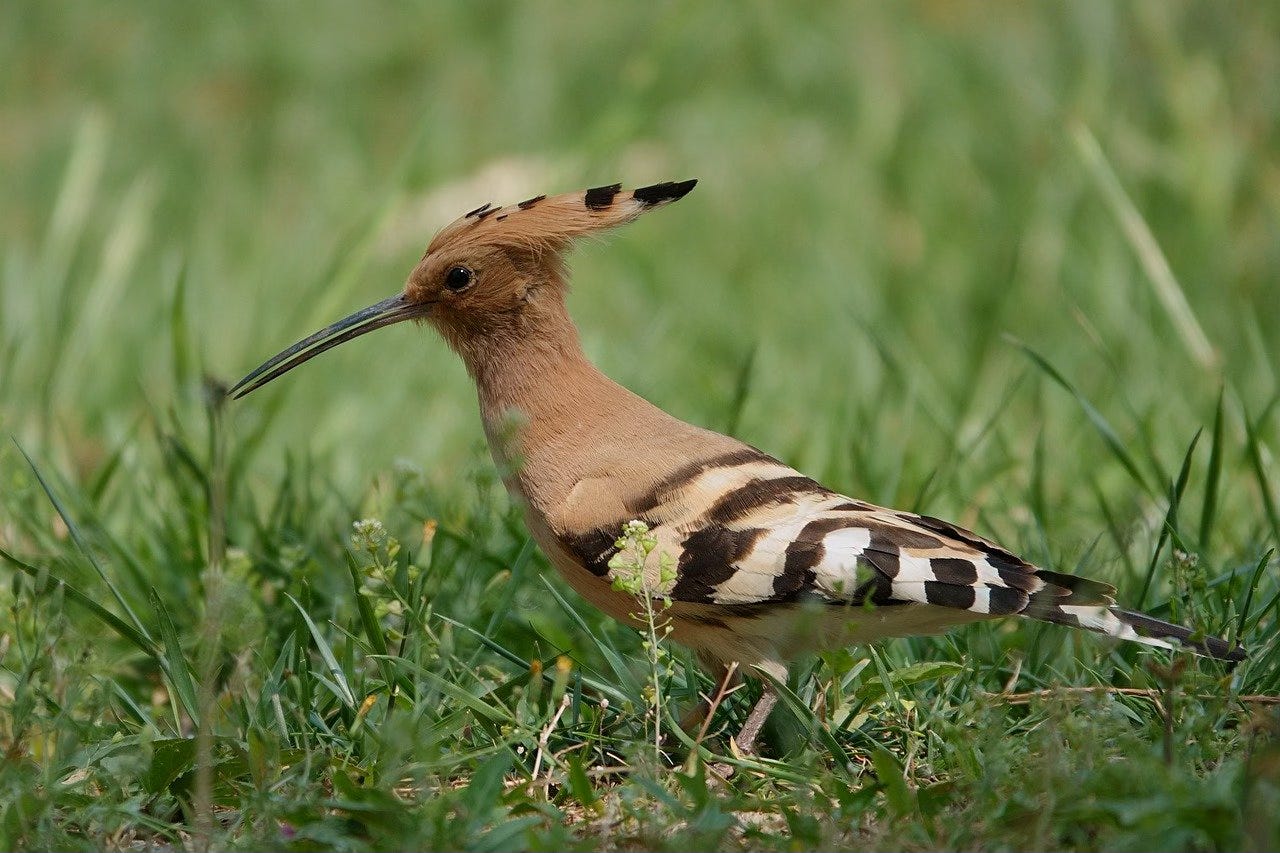


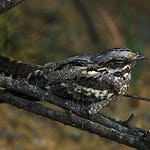
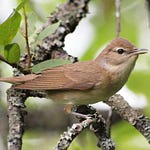

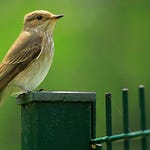


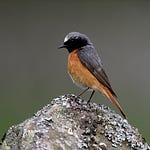
Share this post